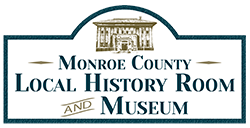The Monroe County Local History Room & Museum oversees the use and preservation of the Wegner Grotto County Park, a concrete sculpture and glass art environment outside Sparta created by Paul and Matilda Wegner in the late 1920s and 1930s. The Grotto, located at 7788 Daylight Road, Sparta, is an unstaffed site open Memorial Day thru Labor Day. There is no charge to visit but donations are welcomed. Call the Local History Room at 608-269-8680 to learn more about the Wegner Grotto or to arrange a group tour (note: there is a nominal fee for organized tours). Please note that experiencing the Grotto requires walking on uneven ground and stairs. There is a portable toilet kept on site from May through September.
The Wegner Grotto County Park is proud to be part of the Wandering Wisconsin consortium of art environments. Explore astounding large-scale works of art known as "art environments" throughout Wisconsin by visiting: https://wanderingwisconsin.org


